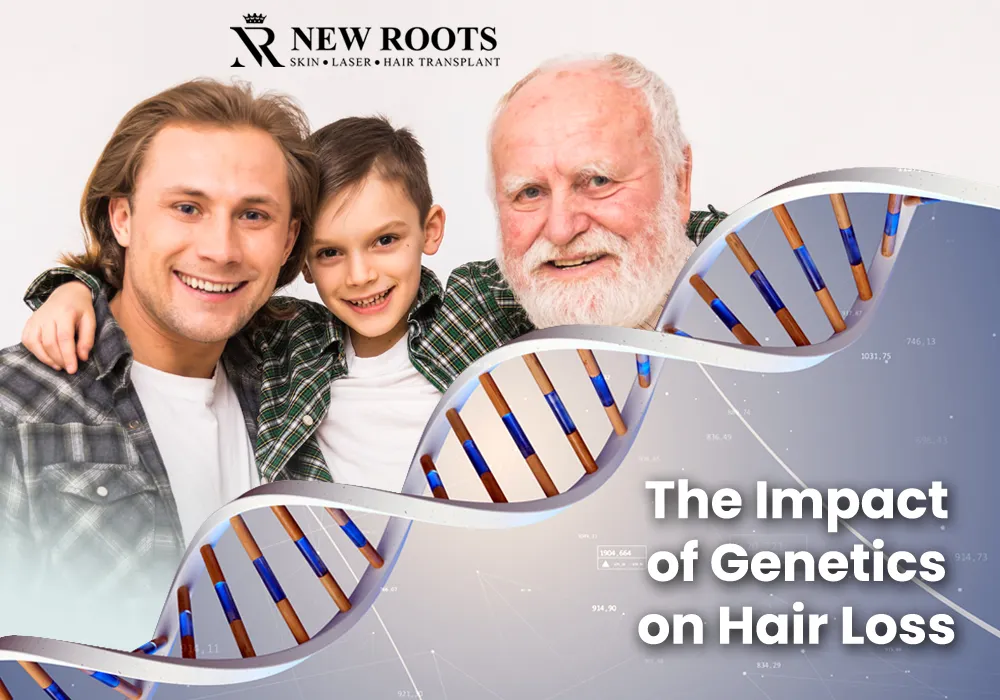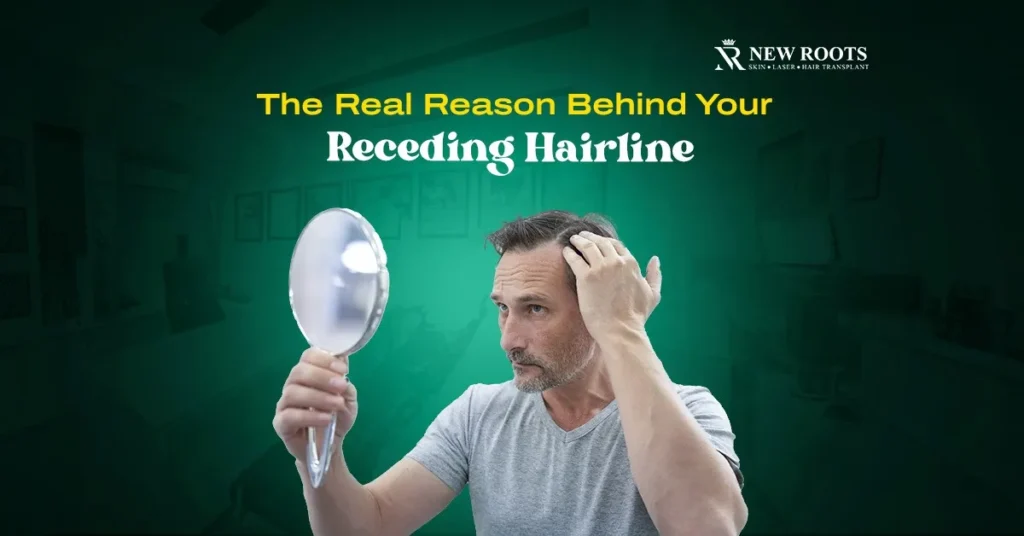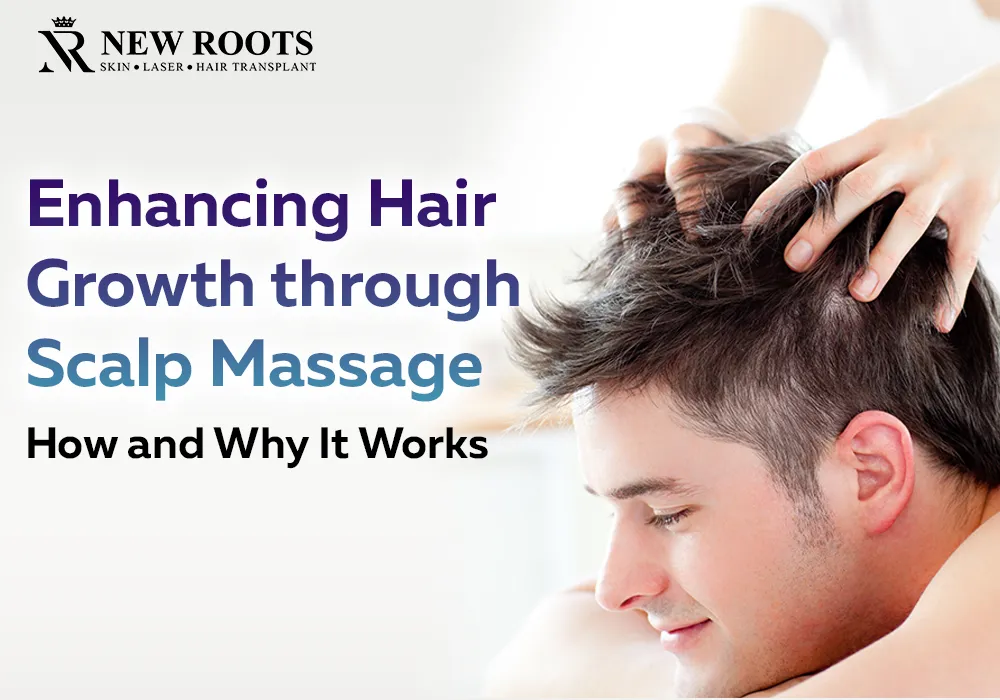Introduction to Reasons for Receding Hairline
Balding is a condition that affects the hairline among both young men and women, and it can wreck one’s emotional stability.
Understanding the reasons for receding hairline is crucial, as it helps individuals identify the root causes of hair loss. Once these causes are known, it becomes easier to search for effective solutions and products to prevent or manage the condition.
Table of Contents
Reasons for Receding Hairline

Genetics and Family History
Heredity is critical in balding or hair thinning. Men with a family history of MPB or other types of hair loss, including inadequate hair volume, are likely to have similar problems.
What is more, people with genetic disorders can have special traits inherent in them, particularly hair follicles that change their size little by little to become smaller, and thus, people suffering from baldness can experience thinning hair.
Aging and Hormonal Changes
Hair aging is one of the natural processes that impact hair strength and health. Human hair growth also declines with age, and if hairs retain their pigmented base color, the balding becomes evident.
Furthermore, it has been established that hormonal changes, especially androgen hormones, can precipitate thinning of this part of the hair.
Medical Conditions Affecting Hair:
Numerous diseases result in hair loss, and, consequently, a receding hairline may occur.
Some of them are thyroid disorders, autoimmune disorders, and skin diseases that inhibit scalp health.
Identifying these conditions through early diagnosis and subsequent management will go a long way toward preventing further hair loss.
Four More Aspects of One’s Life that Influence Hair Loss
There are factors such as smoking, poor diet, and poor hair care that affect hair health. Eating a properly balanced diet and adopting a proper cleaning regimen of the scalp might help halt the further occurrence of hair loss.
Male Pattern Baldness: An Essential Guide
Definition: Androgenetic alopecia is a hereditary type of hair loss that gradually recedes on both sides of the head, starting at the temples and the crown of the head in males.
Causes: These are genetic and hormonal, and more precisely, the results of dihydrotestosterone, which shrinks hair follicles.
Stages: The condition is well articulated with a Norwood scale that categorizes the progression of hair loss into seven stages of baldness, from minimal hair loss to complete hair loss.
Symptoms: Some of these symptoms are the receding hairline, baldness at the crown, and decreased hair thickness. That is why some men observed hair texture changes, too.
Diagnosis: Half of all cases are diagnosed relatively easily, often with routine physical examination of the scalp and through consideration of the patient’s family medical history.
Densitometers may also be employed as instruments for evaluating the density of hair by dermatologists.

Treatment Options: There are some drugs and remedies recommended by the FDA; these include minoxidil topical solution and finasteride oral pill.
Hair transplant surgeries are another possibility for people who require solutions that will last longer.
Emotional Impact: It is also important to know that male pattern baldness can drain one’s psychological well-being and self-esteem.
People affected by this condition have to look for help they require from counselors or support groups to help manage the psychological impact of hair loss.
Genetics: The likelihood of suffering the ravages of male pattern baldness is highly dependent on genetic pristine.
In case close family members have the same issue, such as parents or grandparents, there may be a high tendency to experience the same problems with hair thinning.
Hair growth, texture, and the follicle characteristics concerning hair loss have genetic components that are passed down through generations and confer vulnerability to androgenetic alopecia.
Hormones: Hormonal content can also root the cause of this magnanimity and the occurrence of male pattern baldness. The condition is mainly attributed to male sex steroids, namely testosterone and dihydrotestosterone.
According to genetics, the androgen receptor gene determines how hair follicles will react to these hormones.
In the case of androgenetic alopecia, baldness is experienced after hairs are vulnerable to DHT, leading to a shortened hair growth cycle and decreased hair thickness of hair follicles.
Hormonal changes are one of the causes, and as hair shafts mature, they become lighter, fractionated, and shorter, so hair loss becomes noticeable.
Knowledge of these aspects of male pattern baldness can help people prevent and treat conditions, perhaps better than just using male pattern baldness treatments.
Symptoms of Receding Hairline
Here are the main reasons for a Receding Hairline, as followers
Visible Recession at Temples: The first early sign of hair loss is the fact that hair gradually pulls back from the temporal region, and as a result, the hairline will begin to form an ‘M’ pattern.
Thinning Hair on the Crown: Not only do many people find that their hairline is gradually moving back, but they may encounter what is described as ‘bald patches,’ or hair loss in the crown or vertex of the head.
Widening Part: With the progression of the thinning process, the gap between the hairline and the part may look broader and thus show that the density is low. This may be especially so where the hair has been styled back or where there is a parting that accentuates baldness.
Shorter Hair Strands: Hair strands may also become shorter in length and diameter, which are other major hair changes. The follicles also continue to decrease in size, resulting in hair that appears less in volume and colored from the surface of the skin, making them seem to be fewer.
Medications for Hairline that Starts to Recede
FDA-Approved Treatments
The FDA has approved several treatments for hair loss, including:
Minoxidil: A topical product used to treat hair loss and is easily purchased from stores and chemists.
Finasteride: A tablet or capsule taken by mouth that can reduce rates of additional hair loss and, in some cases, cause hair growth.
Dutasteride: Like finasteride, it is useful in male baldness or hair loss in men. This drug works similarly to finasteride.
Natural Cures and Other Treatment Styles
Some people readily go for medications approved by the FDA when it comes to receding hairlines, while others may opt for natural remedies, many of which may be quite effective but backed by little or no scientific evidence. Common natural alternatives include:
Herbal Treatments: Saw palmetto, stinging nettle, and ginseng are some of the most popular herbs that people use to boost hair health and reduce hair loss, which also works to minimize DHT.
Nevertheless, while preliminary animal studies have raised hopes, more definitive clinical trials comparing these compounds to existing treatments for hair loss have not been widely published.
Essential Oils: Specific oils such as rosemary oil, peppermint oil, and lavender oil have been especially trending for a while as they are considered to have a pro-hair growth effect on the scalp.
It is believed that these oils enhance the circulation of blood towards the scalp as well as offer an anti-inflammatory benefit; nevertheless, this needs additional research to prove it.
Stress as a Motive for Hair Loss
Hormonal pressure is a common reason for hair loss, resulting in what’s referred to as telogen effluvium, wherein hair starts to shed closely.
Such a type of hair loss can be prevented by reducing stress, and this is why learning methods of stress control is also a recommended part of hair care.
Doctors' Consultation and Diagnoses
A consultation with a healthcare provider is an important initial procedure regarding issues associated with hair loss.
A dermatologist may also perform a physical examination, a medical history assessment, and examine your blood or take scalp punch sampling, and then treat the condition.
Emotional Effect of Receding Hairline
Hair loss consists of an emotional burden, as few matters are as devastating as a receding hairline. Some human beings experience insecurity or lose a number of them. It is helpful to know that hair loss is normal, but if someone feels uneasy about it, they may want to get help.
Living with Receding Hairline: Prevention Options for Men
Maintain a Healthy Diet: A diet that is rich in vitamins and minerals, where necessary, may help avoid hair loss.
The major importance of biotin, bacterial iron, and zinc. Eggs, good green leaves, nuts, and fish are good to be taken as they contain omega fatty acids.
Manage Stress Levels: Stress hair loss means that constant stress can cause one to experience hair loss. Stress management techniques that include doing yoga, meditation, or exercise reduce stress and, if properly managed, will enhance hair health.
Mild Hair Care: positive habits need to be practiced to reduce the quantity of force applied to the hair follicles: tugging on hair, brushing hair kind of, or regularly the use of hairstyles that pull at the hair.
Ensure you operate a mild shampoo and do not move for a number of the most famous products that comprise sulfates and parabens for your hair and scalp.
Regular Scalp Massage: Some ways in which you can help to improve blood flow to the hair roots include scalp massaging. The ideal scalp massage should be done frequently to promote hair growth.
Stay Hydrated: Hydration is crucial, more so since water helps in skin and hair health. Appropriate hydration allows nutrients to be brought into focus in the hair follicle effectively.
Utilize hair products wisely: Select washing products that say they can be used for weak hair strands. Unique washes, such as those containing ketoconazole, can move in an extended manner to maintain the scalp healthy.
Keep away from Smoking and excessive Alcohol: Smoking is horrific for movement, and heavy drinking can reduce the supply of vitamins to the follicles, resulting in poor hair health. Slicing down on those conduct may additionally assist promote better hair fitness.
How New Roots Works for Reasons of Receding Hairline
Stimulates Hair Follicles: The New Roots – Skin, Laser & Hair Transplant Clinic product line can be used to invigorate several hair strands, especially since they are expected to stimulate improved circulation of blood on the head. Enhanced circulation brings necessary nutrients to the hair follicles, enhancing hair health.
Supports Hair Growth Cycle: These formulations have compounds that facilitate hair development, especially the anagen phase of the hair growth cycle. When this phase is extended, hair grows both thicker and fuller, according to several (further) sources.
DHT Blockers: Some New Roots supplements contain natural DHT inhibitors such as Saw Palmetto or even pumpkin seed oil. These ingredients reduce the impact of dihydrotestosterone and slow the rate of regular hair shedding.
Nourishing Ingredients: Being packed with vitamins, minerals, and antioxidants, these New Roots hair products provide the scalp with nutrients that enhance the growth of hair and support the growth of healthy existing hair. Exponents such as biotin and zinc are necessary for one’s hair.
Holistic Approach: New Roots’ objective is in line with that approach since supplements for hair growth also focus on root causes such as the condition of the scalp and hormonal issues. Such an approach can have serious benefits in the long run as compared to piecemeal strategies.
Why It Is Best
New Roots is loved and valued as one of the best ways to fight a receding hairline because here one can find a combination of natural remedies and efficiency.
In contrast to some chemical treatments, New Roots products are often less likely to produce negative side effects, thus being more versatile.
Also, they are more comprehensive on the condition of scalp and hair growth phases, making them healthier for one to use when one wants to avoid loss of hair and at the same time encourage the growth of new hair.
Conclusion
Therefore, knowing the main Reasons for Receding Hairlines implies knowledge of genes, hormonal fluctuations, diseases, and ways of life. By identifying these elements over time, people can seek early and appropriate care and management, hence achieving their desired good and best quality hair health.
Q&A ASK
The main reason is genotype, particularly the dihydrotestosterone hair loss predisposing factors, which impact hair roots.
With age, hair growth cycles become fewer than before, hence producing thin hair. Hormonal changes, which this remedy includes, affect the hair, making it less dense, and the hair follicles shrink with time.
Telogen effluvium can also be a result of stresses, which in turn cause a boom in hair loss rate and the development of the receding hairline.
DHT hormones directly influence how hair follicles function, and they play a massive role in receding hairlines since they weaken strands’ roots and make them shrink.
Yes, diseases that affect the body may cause changes in hair and include thyroid disorders, autoimmune diseases, and infections of the scalp that cause hair to fall and create a receding hairline.






